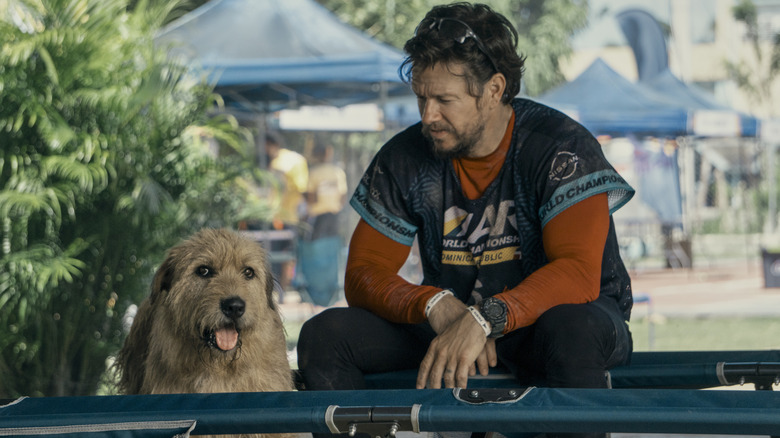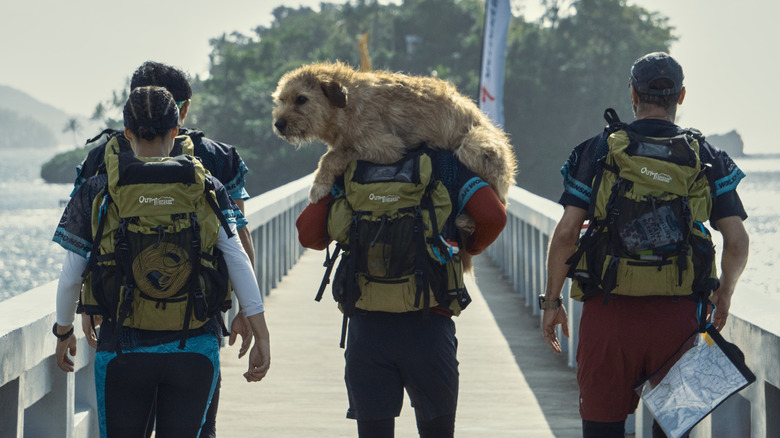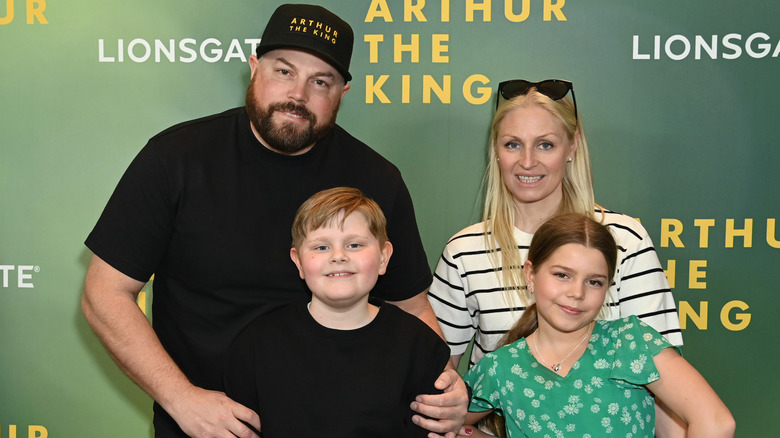The True Story Behind Arthur The King Explained
If you've seen director Simon Cellan Jones's 2024 adventure movie, "Arthur the King," led by Mark Wahlberg (who suffered a huge injury on the movie's set), you may know it was inspired by a true story told in a memoir called "Arthur – The Dog Who Crossed the Jungle to Find a Home." Written by Mikael Lindnord — a Swedish adventure racer, athlete, coach, lecturer, and entrepreneur — it's a fascinating and moving firsthand account of an unexpected and sweet bond between a man and a stray dog who found a friend in each other during the 2014 Adventure Racing World Series (ARWS) that stretched across 435 miles in the mountains and jungles of South America.
Though "Arthur the King" remained more or less loyal to the core of the real story that inspired the film, it also changed and left out details of the real-life account. It also Americanized the narrative, which was about a non-American and took place entirely outside of the United States. Here, we break down how the original story went down in real life as opposed to its dramatized silver screen adaptation. (And if you're someone who needs to know if Arthur survives his adventure in the film, we have you covered.)
The making of a life-changing friendship during the final race
Before retiring from adventure racing in 2015, Mikael Lindnord was a professional athlete for two decades, having started his career in 1997. He was also the first Swedish person to lead his national team to win the Adventure Race World Series in 2010 in Costa Rica. In his last year as an adventure racer, Lindnord was team captain during the 2014 AWRS, an experience that, according to his own account, changed his life.
On the fourth day of the race, Lindnord's team had reached a transition area in Ecuador when he spotted a shabby, wounded dog wandering around the contestants. The stray wanted food but was in such poor condition that everybody steered clear of him. Even Lindnord kept his distance at first. But when he decided to feed the pup some Swedish meatballs, his generosity was returned in dividends.
The mongrel (who they began calling Arthur) followed them for hundreds of miles, across the harshest of terrains. He became a teammate. They fed him, even when low on food, and Arthur quickly grew close to the team. When Lindnord and his crew had to cross a river in kayaks, they thought this was goodbye. But even though the event organizers didn't allow them to take Arthur, he decided to jump in and follow along anyway.
That's when it became more than a race. Lindnord had to pull the dog out of the water since he proved to be a bad swimmer, saving him from drowning and freezing. The two soon found themselves connected in a way only a human and a dog can. By then, Lindnord didn't care about the consequences and the outcome of the championship. When he and his team crossed the finish line with Arthur, they came in 12th place, the initial goal of getting on the podium having long faded away.
Arthur finding a new home
Once the race ended, Arthur was in terrible shape. Frail, malnourished, and exhausted, he needed immediate medical help. Lindnord took him to a veterinarian, which was when the Ecuadorian team suggested that he should adopt him. Until then, that didn't even cross his mind, but after Arthur had received the necessary clinical procedures, Lindnord began looking into the process of adopting his four-legged teammate.
It wasn't an easy task, since the Ecuadorian authorities weren't happy about transporting a sick animal out of the jungle to Sweden. There was an extreme amount of paperwork that needed to be taken care of, yet Lindnord was determined and relentless in helping his new teammate. In an interview with InsideHook, he said, "In adventure racing, all you can do is give your best for your teammates, and for this second process of getting him to Sweden, I gave him my best as well, because he deserved that."
Lindnord launched an online campaign to raise the cash to adopt and take Arthur to his new home. The support was overwhelming. The minister of Ecuadorian Social Affairs personally reached out and offered to help with the final documentation needed for making the trip. Though the stray made it to Sweden, he needed surgery, and his survival remained in question. Eventually, he pulled through and adapted to his new surroundings without further problems. Arthur had found what so many strays often can't: a loving family and a warm home. As Lindnord recounted in an ESPN documentary, saving Arthur was the best thing he's ever done. Sadly, the pup passed away in 2020 of cancer, weeks before shooting began on the film he inspired. After his death, Lindnord managed to get legislation passed to protect strays in Ecuador. He returned to the country five years later and saw the remarkable results.
Interested in learning about some movies that you never expected to be based on real-life stories but are? Looper has you covered!


